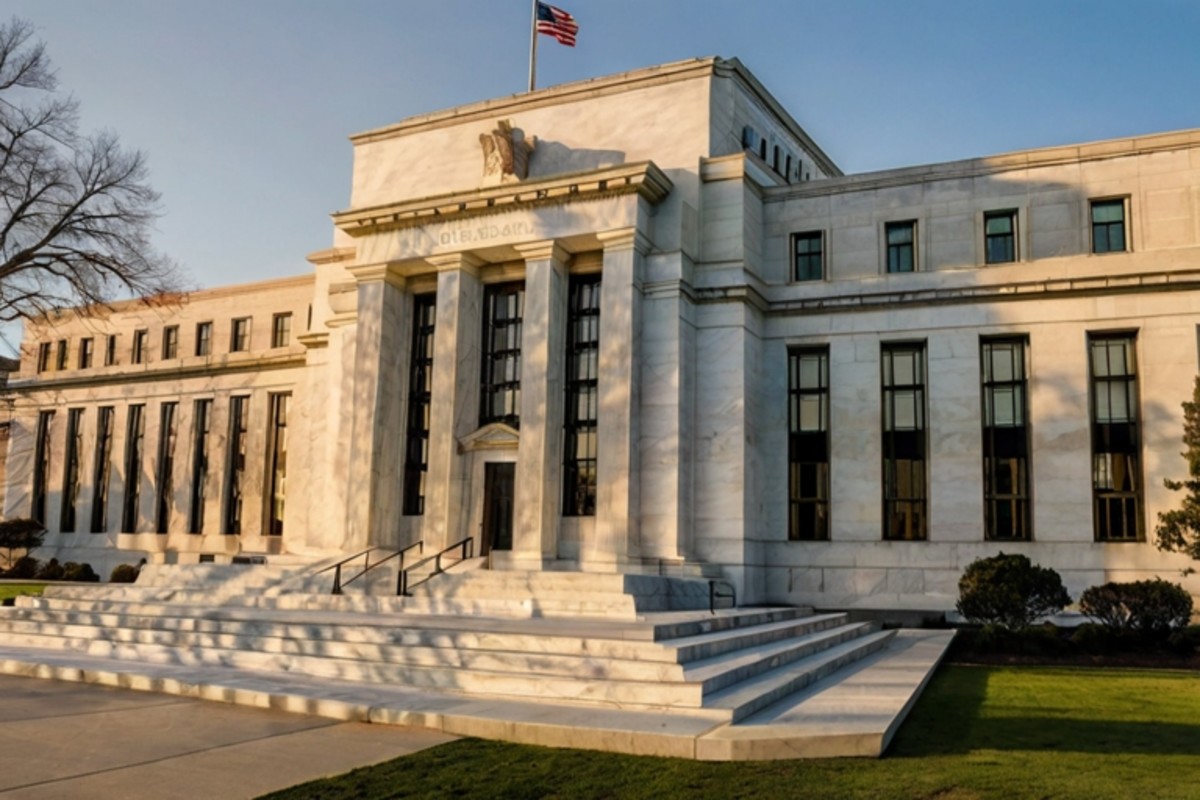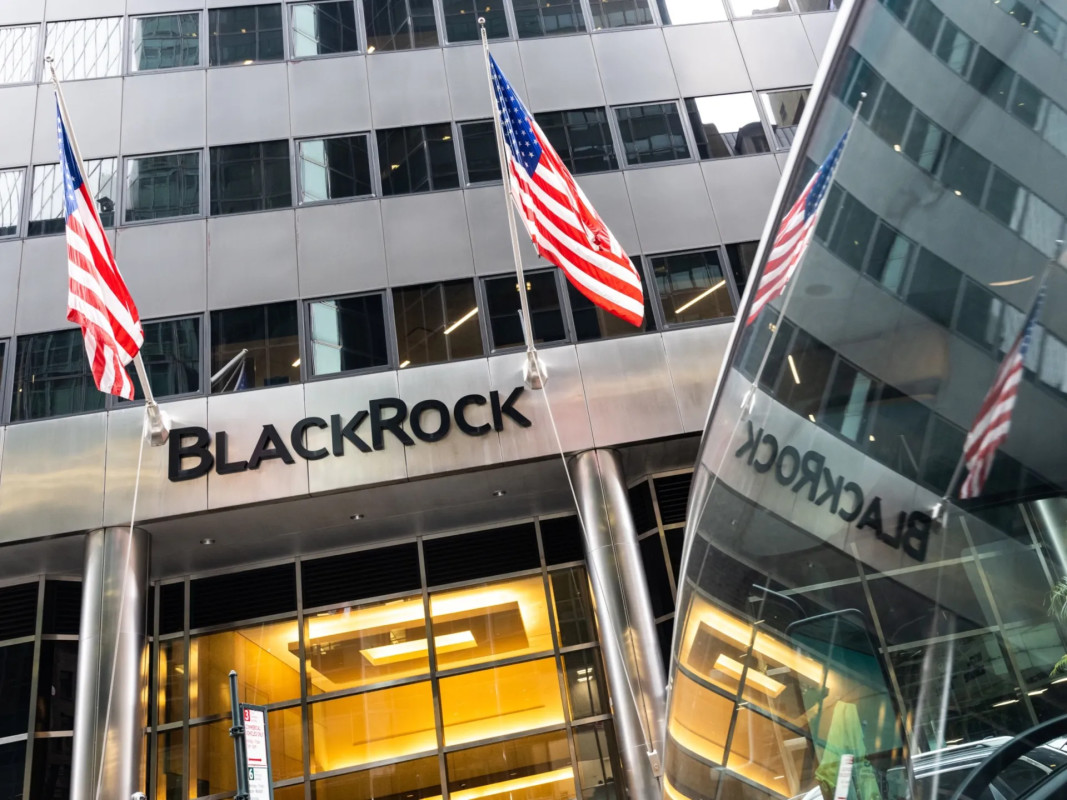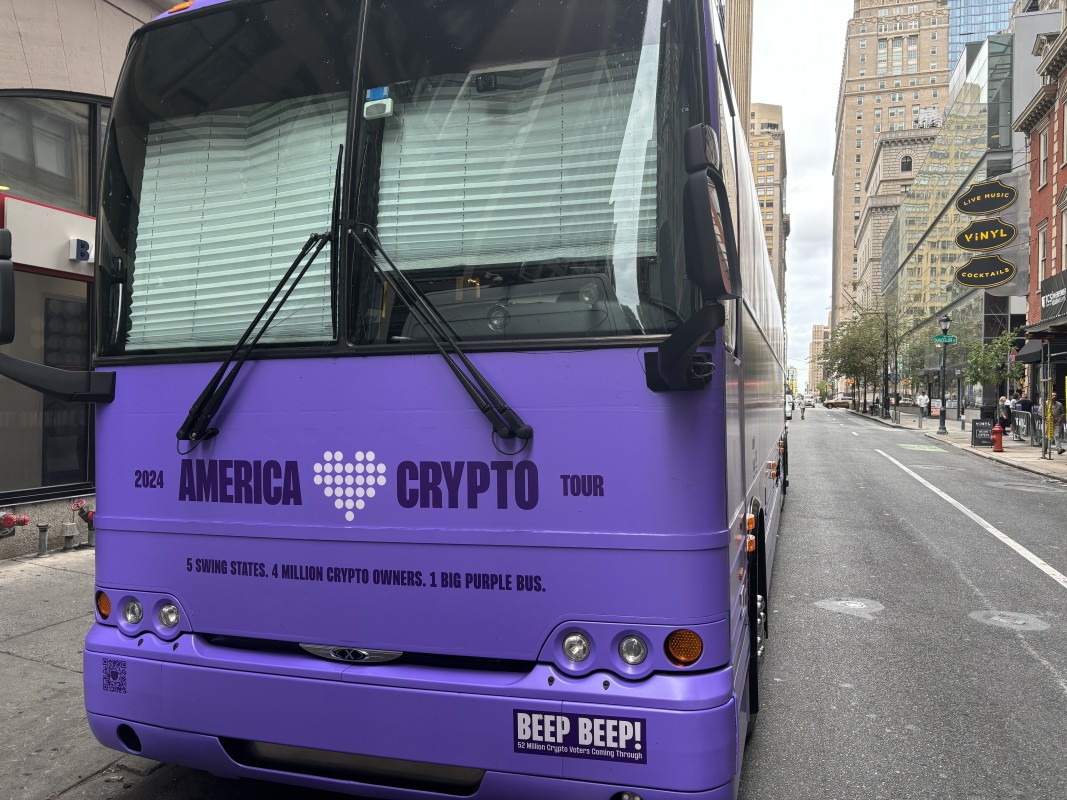Month: September 2024
Fractal Bitcoin: A Misleading Affinity
Fractal Bitcoin is a recently launched project that bills itself as “the only native scaling solution completely and instantly compatible with Bitcoin. In essence it is a merge mined system portraying itself as a second layer sidechain for Bitcoin, where multiple levels of “sidechains” can be stacked on top of each other. So think of a sidechain of the mainchain, a sidechain of the sidechain, a sidechain of the sidechain of the sidechain, etc. It is not.
Shitcoins Are Not Second Layers
Firstly, the entire system is built around a new native token, Fractal Bitcoin, that is issued completely independent of Bitcoin. It even comes with a massive pre-mine of 50% of the supply being split between an “ecosystem treasury”, a pre-sale, advisors, grants for the community, and developers. This is essentially the equivalent of the entire first halving period of Bitcoin when the block subsidy was 50 BTC per block. From here the network jumps to 25 Fractal Bitcoin (FB) per block.
Secondly, there is no peg mechanism for moving actual bitcoin into the “sidechain.” Yes, you read that correctly. They are framing themselves as a sidechain/layer two, but there is no actual mechanism to move your bitcoin back and forth between the mainchain and “the sidechain” Fractal Bitcoin. It is a completely independent system with no actual ability to move funds back and forth. One of the core aspects of a sidechain is the ability to peg, or “lock,” your bitcoin from the mainchain and move it into a sidechain system so that you can make use of it there, eventually moving those funds back to the mainchain.
Fractal Bitcoin has no such mechanism, and not only that, the discussion around the topic in their “technical litepaper” is completely incoherent. They discuss Discreet Log Contracts (DLCs) as a mechanism for “bridging” between different levels of Fractal sidechains. DLCs are not a suitable mechanism for a peg at all. DLCs function by pre-defining where coins will be sent based on a signature from an oracle or a set of oracles expected at a given time. They are used for gambling, financial products such as derivatives, etc. between two parties. DLCs are not designed to allow funds to be sent to any arbitrary place based on the outcome of the contract, they are designed to allocate funds to one of two participants, or proportionally to each participant, based on the outcome of some contract or event that an oracle signs off on.
This is not suitable for a sidechain or other system peg, which is ideally architected to allow any current owner of coins in the sidechain or second layer system to freely send coins to any destination they choose so long as they have valid control over them on the other system. So not only is there no functional peg mechanism for the live system, but their hand waving about potential designs for one in their litepaper is just completely incoherent.
The whole “design” is a clown show designed to pump bags for pre-mine holders.
“Cadence” Mining
Another troubling aspect of the system is its variation on merge mining, Cadence mining. The network utilizes SHA256 as the hashing algorithm, and it does support conventional Namecoin style merge mining. But there is a catch. Only one third of the blocks produced on the network are capable of being produced by Bitcoin miners engaged in merge mining. The other two thirds must be mined conventionally by miners switching their hashrate entirely over to Fractal Bitcoin.
This is a poisonous incentive structure. It essentially tries to associate itself with the Bitcoin network calling itself a “merge mined system”, when in reality two thirds of the block production mandates turning hashrate away from securing the Bitcoin network and devoting it exclusively to securing Fractal Bitcoin. Most of the retard is not capturable by miners who continue mining Bitcoin, and the greater the value of FB the greater the incentive for Bitcoin miners to defect and begin mining it instead of bitcoin to increase the share of the FB reward they capture.
It essentially functions as an incentive distortion for Bitcoin miners proportional to the value of the overall system. It also offers no advantage in terms of security at all. By forcing this choice it guarantees that most of the network difficulty must remain low enough that whatever small portion of miners find it profitable to defect from Bitcoin to FB can mine blocks at the targeted 30 second block interval. Conventional merge mining would allow the entire mining network to contribute security without having to deal with the opportunity cost of not mining Bitcoin.
What’s The Point of This?
The ostensible point of the network is to facilitate things like DeFi and Ordinals, that consume large amounts of blockspace, by giving them a system to utilize other than the mainchain. The problem with this logic is the reason those systems are built on the mainchain in the first place is because people value the immutability and security that it provides. Nothing about the architecture of Fractal Bitcoin provides the same security guarantees.
Even if they did, there is no functional pegging mechanism at all to facilitate these assets from being interoperable between the mainchain and the Fractal Bitcoin chain. The entire system is a series of handwaves past important technical details to rush something to market that allows insiders to profit off of the pre-mine involved in the launch.
No peg mechanism, an incoherent “merge mining” scheme that not only creates a poisonous incentive distortion should it continue rising in value, but actually guarantees a lower level of proof of work security, and a bunch of buzzwords. It does have CAT active, but so do testnets in existence. So even the argument as a testing ground for things built using CAT is just incoherent and a half assed rationalization for a pre-mined token pump.
Calling this a sidechain, or a layer of Bitcoin, is beyond ridiculous. It’s a token scheme, pure and simple.
Federal Reserve Cuts Interest Rates by 50 Basis Points to Address Economic Uncertainty
The Federal Reserve made a significant decision today by cutting interest rates by 50 basis points, lowering the federal funds rate target range to 4.75%-5%. The move, the first substantial cut in over four years, reflects concerns over the state of the U.S. economy, despite continued reported economic expansion.
According to the Federal Reserve’s official statement, recent economic activity indicators show good growth, but job gains have slowed, and the unemployment rate has slightly risen. While inflation has made progress toward the Committee’s 2% target, it remains somewhat elevated. The rate cut is part of the Fed’s strategy to balance maximum employment with price stability in the face of economic uncertainties.
The Fed said that this rate reduction aligns with their commitment to achieving sustainable inflation control while supporting growth in the job market. The Committee will continue monitoring economic developments and adjusting its monetary policy to mitigate risks that could impede its goals. In addition to rate cuts, the Fed will maintain its policy of reducing holdings of Treasury securities and mortgage-backed assets.
This decision reflects the Federal Reserve’s approach in navigating a challenging economic landscape, balancing growth and inflation targets while remaining vigilant about potential risks that may emerge in the future. Markets will now look to how this policy shift affects broader financial conditions and future rate decisions.
While this rate cut is aimed at supporting economic growth and stabilizing inflation, it could also have positive implications for Bitcoin. Lower interest rates tend to reduce the appeal of traditional assets like bonds and savings accounts, prompting investors to seek alternative investments with higher potential returns in a low-interest-rate environment, like BTC. Historically, rate cuts have contributed to increased liquidity in financial markets, potentially fueling demand for Bitcoin as part of a diversified portfolio.
Fed Chair Jerome Powell is slated to speak on this decision in further detail here at 2:30PM EST.
River Secures Over $800 Million Worth of Bitcoin, Launches Proof of Reserve
River, a leading U.S. Bitcoin exchange, has launched River Proof of Reserves to provide clients with verifiable proof that their Bitcoin holdings are fully reserved. This sets a new transparency standard for the industry after recent failures of exchanges like FTX shook consumer trust.
River CEO Alex Leishman stated, “River Proof of Reserves is about more than verifying our balances; it’s about reinforcing River’s commitment to integrity and long-term client trust.” He added, “Our goal is to build unshakable trust with our clients. Proof of Reserves is the gold standard for Bitcoin custody.”
The new feature allows clients to independently confirm that River holds their Bitcoin in full reserve multi-sig cold storage. River currently secures over $800 million worth of Bitcoin for its clients.
According to Leishman, “We’re leading by example by proving every month that your Bitcoin is exactly where we say it is.” After recent failures, he encouraged the industry to adopt similar transparency standards to rebuild trust.
The added transparency also prevents fractional reserve practices from destabilising fiat currencies and leading to bank failures. If more Bitcoin exchanges prove full reserves, it could restore faith in intermediaries while stopping dangerous leverage in the system.
“PickleBit”: Proof of Workforce, Fold, and Pickle Pop Partner on Pickleball Tournament, Offer Bitcoin Prize Pool
The Santa Monica-based non-profit Proof of Workforce Foundation has partnered with Bitcoin financial services company Fold and Pickle Pop to organize a Bitcoin-themed Pickleball tournament, offering a $5,000 prize pool for entrants and winners.
The tournament is slated to be held on October 18 in Santa Monica, California during the Peer to Pier Bitcoin Festival. Featuring both a semi-pro and amateur division, the winner of each division will receive their payouts in bitcoin. Entrants will also have the opportunity to win Bitcoin hardware wallet devices provided by CoinKite.
“This will be an incredible event, bringing together two talented and high growth communities, Bitcoiners and Pickleballers, to support creative re-use of commercial space on the 3rd street promenade”, said Proof of Workforce Founder and Santa Monica firefighter Dom Bei.
Earlier this year, Bei’s Foundation partnered with the City of Santa Monica to launch the Santa Monica Bitcoin Office, making it the first U.S. city to do so.
“The Santa Monica Bitcoin Office is already bringing communities and revenue opportunities to key areas of our economic revitalization strategy, and has done so at zero cost to the city”, said City of Santa Monica Vice Mayor Lana Negrete. “This is exciting and an example of collaborative and innovative ideas to reimagine retail on 3rd Street.”
Brian Harrington, Senior Marketing Manager at Fold, added:
“I’ve loved seeing the Bitcoin community grow in Southern California over the years and what the city of Santa Monica is doing with it is amazing.”
Participants can register for the tournament on the PickleBit tournament website, where they will also receive bitcoin rewards for signing up and playing in the tournament.
BlackRock Releases a New Report, “Bitcoin: A Unique Diversifier”
Asset management giant BlackRock, with over $10 trillion in assets under management, has published a new report touting Bitcoin as a unique portfolio diversifier. This marks the latest embrace of Bitcoin from the world’s largest asset manager.
Earlier this year, BlackRock launched a Bitcoin exchange-traded fund (IBIT), rapidly becoming one of the most successful ETF launches ever. The Bitcoin ETF already has over $21 billion in assets under management.
BlackRock CEO Larry Fink also recently changed his sceptical stance on Bitcoin, admitting he was “wrong” to dismiss it. The firm has steadily released research explaining Bitcoin’s potential role for investors.
The new report explains that while volatile, Bitcoin is fundamentally detached from other asset classes over the long term. It argues Bitcoin’s adoption depends on global concerns over monetary stability, geopolitics, fiscal policy, and political stability – the inverse of traditional “risk assets.”
“Bitcoin, as the first decentralized, non-sovereign monetary alternative to gain widespread global adoption, has no traditional counterparty risk, depends on no centralized system, and is not driven by any one country’s fortunes,” the report states.
As major traditional finance players like BlackRock increasingly embrace Bitcoin, its reputation and adoption will likely accelerate, bringing it further into the mainstream. BlackRock’s continued pro-Bitcoin stance reflects growing acceptance by global financial institutions.
Asia FX firm, dollar drifts lower with Fed rate cut in sight
Post Content
Samourai Developers Appear Together In Court For First Time At Status Conference
Today, Samourai Wallet developers Keonne Rodriguez and William Lonergan Hill appeared together in court in the Southern District of New York for a status conference.
This was the first time the two made a public appearance together since the US Department of Justice (DoJ) charged the two developers with conspiracy to commit money laundering and conspiracy to operate an unlicensed money transmitting business in April 2024. It was also the first time either of them have appeared in court since Hill appeared ahead of his bail release in July and Rodriguez first attended a court hearing in May.
The prosecution addressed the court first, stating that it had produced “voluminous batches of discovery.”
It made the first batch available to the defense in mid-June 2024. This batch featured business records, emails and social media account information amongst other data.
The second batch, which it made available to the defense in mid-August 2024, featured data extractions from the devices that the DoJ seized from the two developers. The DoJ has extracted information from 15 of the 44 devices seized from Rodriguez and 25 of the 27 devices seized from Hill.
The prosecution also stated that it would produce a third batch of discovery containing a “relatively modest” amount of data soon and that it was prepared to proceed with trial.
No Evidence Of Money Transmission
Rodriguez’s attorney made the case that it was premature to set a trial date, as the defense has yet to review all of the discovery made available in mid-August 2024. The defense also said that it has yet to come across any evidence showing that Rodriguez or Hill operated an unlicensed money transmitting business.
Hill’s attorney stated that they’ve received 8 terabytes worth of discovery. To put this amount of data in context, he explained that this was the equivalent of 75% of the amount of information in the Library of Congress and that, if one printed this information, one could stack the paper it was printed on “to the moon and back 22 times,” making the point that it would be hard to sort through and review.
Hill’s attorney also referenced the letter from Senators Cynthia Lummis (R) and Ron Wyden (D) in which the lawmakers stated that the DoJ’s unprecedented interpretation of the US Department of the Treasury’s Financial Crimes Enforcement Network (FinCEN) statute regarding operating an unlicensed money transmitting business contradicts the intent of the rule. For this reason, he proposed a motion to dismiss the charge.
The judge denied this request and scheduled a follow-up hearing for December 17, 2024 at 10 AM ET.
Rodriguez’s Request For Bail Modifications
In the second portion of the conference, Rodriguez’s lawyer requested two modifications to Rodriguez’s bail conditions. He requested that the court remove Rodriguez’s home detention mandate and that the court modify restrictions on Rodriguez’s ability to transact with cryptocurrency, some of which was proceeds from Samourai. (Zack Shapiro, Legal Fellow at the Bitcoin Policy Institute (BPI) later explained to me that the second modification was requested in part so that Rodriguez could use bitcoin proceeds from Samourai to pay for legal fees.)
Rodriguez’s attorney argued that home detention was “unduly restrictive” and “unnecessary,” and that Rodriguez isn’t a flight risk. The defense also cited two instances in which Rodriguez had the opportunity to flee but didn’t in its efforts to make the case that Rodriguez no longer needed to wear a location monitoring device.
The prosecution pushed back, arguing that Rodriguez’s home detention was necessary to ensure that Rodriguez continued to appear for trial. It also stated that the charges being levied against Rodriguez for running a “cryptocurrency money laundering business” were severe and that Rodriguez was potentially facing a potential sentence of up to 25 years.
The prosecution went on to cite evidence from handwritten pages that it had obtained from Rodriguez’s home containing details about how he would flee the country to a jurisdiction from which it would be difficult to extradite him. This information included a list including different passports as well as having $10,000 in cash, a burner phone, an unused SIM card, and various mnemonic phrases for crypto assets amongst other items.
Rodriguez’s lawyer argued that this plan applied to what Rodriguez would do in the case of a more general emergency, while the prosecution argued that this was Rodriguez’s current escape plan.
The prosecution stated that it was “a pretty good plan” and that it doesn’t feel that it’s appropriate to stop monitoring Rodriguez at this time. However, the prosecution did say that it would consider allowing Rodriguez certain freedoms if petitioned, without including any specifics.
The judge didn’t allow for the modification of the bail conditions and asked both the prosecution and the defense to “get moving on the case.”
Donate to the legal defense fund for Rodriguez and Hill via BPI’s P2P Rights Fund.
US dollar strengthens ahead of expected Fed rate cut
Post Content
Key Battleground State Pennsylvania Hosts Day Five of the America Loves Crypto Tour
On a cool autumn evening in Philadelphia, PA, more than just crypto bros showed up in The City of Brotherly Love to show their support for Bitcoin and crypto on the fifth stop on the America Loves Crypto tour. A diverse crowd of approximately 200, split evenly between men and women, filled Vinyl, a stylish venue in the heart of the city where the event was hosted. The size and enthusiasm of the crowds on this tour has grown considerably as it has rolled on, lending some credence to the notion that the crypto voting block may play a role in swaying major races in US elections come November.
The speakers on this tour date included former US Senator and member of Coinbase’s Global Advisory Board Pat Toomey (R); former Congressman Patrick Murphy (D), Kara Calvert, Head of US Policy at Coinbase; Dominic Folino, President of the Pennsylvania Blockchain Coalition; David Johnson, General Council and Strategic Advisor at The Giving Block; Cody Eddings, co-founder and CEO of Snap Refund; and Sam Weinrott, co-founder of PizzaDAO. Electronic pop artist Lauv headlined the event.
The theme at the event was that Pennsylvanians, 1.4 million of which are crypto owners, have a big role to play if they want to help move the US in a more pro-crypto direction. Pennsylvania is one of the seven swing states that will likely decide the outcome of the US Presidential election in November, and it’s the one with the most electoral votes: 19. Given that the number of that state’s residents who own crypto is 18 times the vote differential between President Biden and former President Trump in the 2020 Presidential election, it’s imperative that pro-Bitcoin and pro-crypto Pennsylvanians vote, which the speakers at this event made clear.
Former Politicians Urge Pro-Crypto Pennsylvanians To Vote
As one of the first speakers at the event, Toomey, a long-term crypto advocate, set the tone for the evening, calling on voters to vote anti-crypto politicians out of office.
“My former colleagues have not been able to get legislation across the goal line [and] an out of control Securities and Exchange Commission [SEC] is casting a dark shadow over all kinds of crypto development,” began Toomey from the stage.
“The growth of this whole sector should be happening in the United States of America. We’ve got the head start. We’ve got the tremendous entrepreneurship. We’ve got the infrastructure. But, increasingly, some of the most talented people in our country are leaving because there are jurisdictions overseas that have provided legal clarity about this,” he added.
“There are some folks in Congress on both sides of the aisle that are very in favor of allowing crypto to really develop and thrive. And there are others who are very hostile. My suggestion: some of the hostiles need to lose an election.”
Murphy brought a similar energy, as he highlighted the importance of Bitcoin and crypto as well as Pennsylvanians’ role as voters to protect it.
“The whole point of crypto is the fact that we don’t have to rely on a government or a central bank,” said Murphy, making the point that we can use the technology to control our own destiny.
He then seconded Toomey’s call to action regarding voting anti-crypto politicians out of office.
“He was absolutely right when he said there’s people that are not for us, and we should hold them accountable,” said Murphy.
To do so, Murphy hammered home the point that Pennsylvania voters have a key role to play in this election.
“There are only really six states that are going to control this election, [and] Pennsylvania [is one with] 19 electoral votes,” said Murphy. “So, we have an incredibly important voice, but only if we use it.”
Founders Ask For Clear Crypto Rules
Following the talks from Toomey and Murphy was a founders panel featuring Johnson, Folino, Eddings and Weinrott.
Much like what was discussed on a panel on the first stop on the tour, the founders present asked for little more than clear rules of the road for crypto from the US regulatory apparatus.
“Being compliant in crypto right now in the US is incredibly hard because, as much as you want to follow the rules, it’s not always clear what the rules are,” said Johnson.
“Too many folks in Washington either don’t understand the technology, don’t care to understand it, or, in many cases, unfortunately, are hostile to it. The reality is innovators are gonna innovate, whether it’s here or somewhere else,” he added.
Founders share their thoughts on crypto regulation in the US.
“We know that crypto is the future of payments, and the reason we’re out here supporting this is that we want that to happen in the US, not elsewhere.”
Folino chimed in, sharing his thoughts on the roadblocks preventing the crypto industry from flourishing in the US.
“Politicians, regulation and one Senator whose name we all know I think is a real big reason why we’re not moving forward,” said Folino, presumably referring to Senator Elizabeth Warren, head of the anti-crypto army. “Everyone has to get out and vote; everyone has to continue to educate everyone they can.”
Folino is no stranger to educating others, including policymakers in Pennsylvania, about Bitcoin and crypto. Through his work at the Pennsylvania Blockchain Coalition, he frequently speaks with state-level politicians.
“Folks absolutely want to get it,” Folino told Bitcoin Magazine about the elected officials and bureaucrats who he educates in Pennsylvania.
“We’ve got a lot of more open-minded members in the PA State House. And I think they’re getting it in the Senate, as well,” he added, before sharing that crypto will be a pivotal issue in upcoming PA elections in both this election cycle and even more so in the future.
A Sophisticated Voter Base
Calvert echoed Folino’s sentiment that crypto would continue to become a bigger voting issue as time goes on. She’s also been pleasantly surprised by not only how many have raised their voices to make crypto an issue in this election cycle, but by how sharp those who have spoken up and come out to the America Loves Crypto tour events are.
“It’s a really sophisticated crowd,” said Calvert of the tour’s attendees. “I expected more people who were just coming out for the artists, and what I’ve discovered is it’s people who really, really care deeply about crypto.”
Calvert also commented on the fact that those in attendance are not only educated when it comes to crypto but are active voters, as well.
“In Detroit I asked the question ‘How many people know where their polling place is?’” said Calvert, before mimicking the majority of the crowd’s reaction by shooting her own hand into the air.
“I was blown away. So, it’s not just the sophistication of them as crypto owners, [but] their sophistication as voters. In Milwaukee, same thing. And here, same thing. I’ve been stunned by how sophisticated they are,” she added.
In part because of what she’s seen on the tour, Calvert believes that the Bitcoin and crypto industry will find a home in the US.
“America is going to win,” said Calvert.
“You can’t prevent innovation from happening. You can make it a lot harder. You can create barriers. But ultimately, I think innovation wins out,” she added, before noting that the new, powerful crypto voting block has to get out and vote in November to help expedite this process — especially in a state like Pennsylvania.
The final date of the America Loves Crypto tour is scheduled for Wednesday, September 18, at The Black Cat in Washington, DC and will feature a performance by The Chainsmokers. You can RSVP to the event here.
Capital Economics sees rough year ahead for Mexican assets
Post Content









